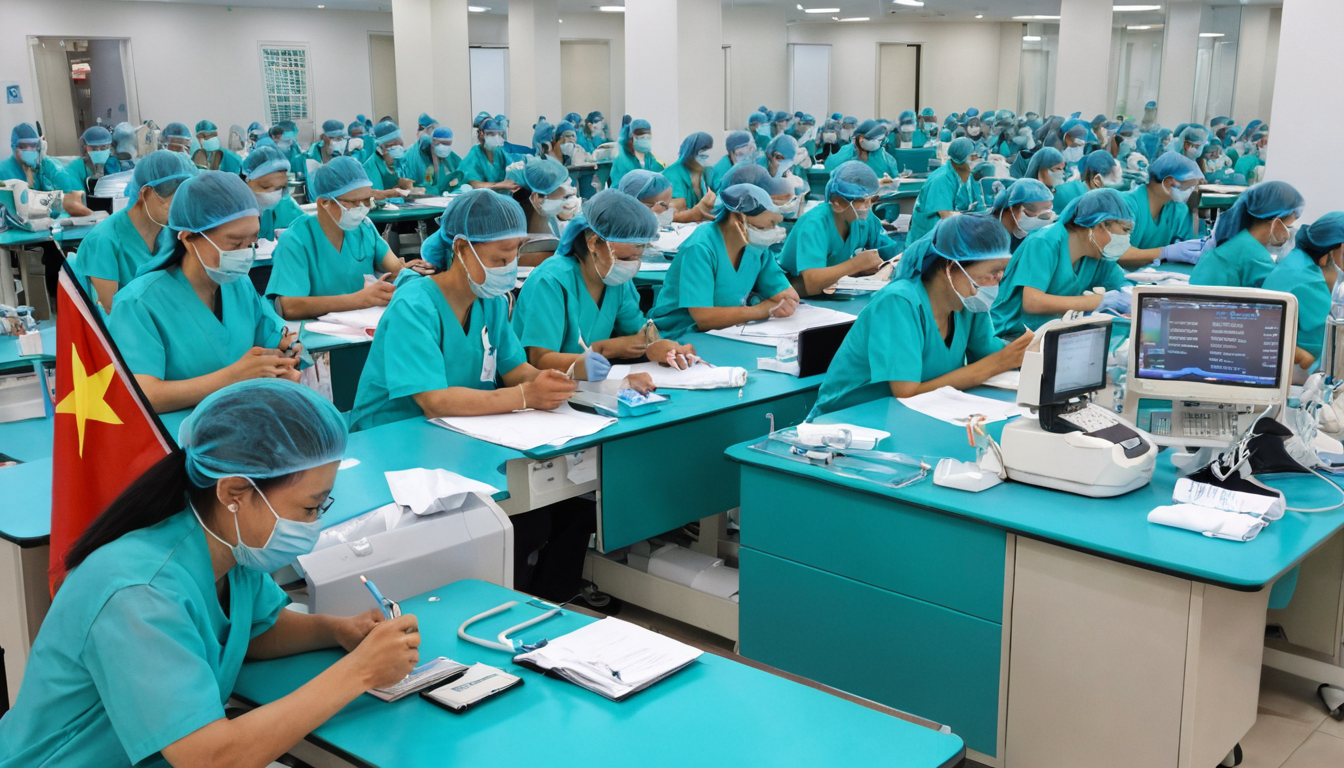Medical Devices Compliance in Vietnam: Insights for Equipment Distribution Companies
Vietnam’s healthcare sector has seen a dramatic increase in spending, with projections indicating that by 2030, healthcare expenditure will reach US$33.8 billion, up from US$16.1 billion in 2017. This growth presents significant opportunities for medical device manufacturers, but it also brings challenges related to regulatory compliance. This article explores the medical device compliance framework in Vietnam, including device classification, registration processes, and the requirements for foreign companies entering the market.
The Growing Need for Medical Devices Compliance
With the rise in healthcare spending and a growing need for modern medical equipment, the demand for compliant medical devices has surged. Despite increased investments, there remains a notable gap in Vietnam’s healthcare infrastructure, particularly in outdated surgical tools and medical devices. The need for up-to-date equipment is significant, as a large portion of the population still seeks treatments abroad due to limited local availability of advanced healthcare technologies.
In this context, foreign companies can capitalize on this gap by ensuring their medical devices meet local regulatory standards. InCorp Vietnam plays a key role in assisting international medical equipment manufacturers in securing the necessary certifications and registrations required to sell their products in Vietnam.
Understanding Medical Equipment and Its Classification
Medical equipment in Vietnam is broadly defined under government circulars to include software, diagnostic chemicals, and physical tools used for various medical purposes, such as:
- Modifying or supporting physiological processes
- Diagnosing, treating, and preventing diseases
- Sustaining life
- Disinfection and sterilization of equipment
- Supporting transportation for medical activities
Vietnam’s regulatory system classifies medical devices in alignment with ASEAN standards and the World Health Organization’s Global Harmonization Task Force (GHTF). Medical devices are grouped into four classes based on risk level:
- Class A: Low-risk devices like surgical gloves and bandages.
- Class B: Low-moderate risk devices such as thermometers and pregnancy kits.
- Class C: High-moderate risk devices, including implants and electric scalpels.
- Class D: High-risk devices like artificial bones and pacemakers.
Additionally, the Food and Drug Administration (FDA) guidelines are followed, which categorize medical devices as:
- Class I: Low-risk devices such as bandages and hand-held surgical instruments.
- Class II: Moderately risky devices such as powered wheelchairs and CT scanners.
- Class III: High-risk devices such as breast implants and defibrillators.
For foreign companies seeking to enter Vietnam, understanding this classification is critical, as it impacts the registration process, fees, and timelines.
Registration Process for Medical Devices in Vietnam
Medical equipment distribution companies must adhere to strict registration procedures based on device classification. For Class A and Class B devices, manufacturers must submit a “Declaration of Applied Standard” to the Ministry of Health’s Department of Medical Equipment and Health Works (DMEHW) to obtain a Marketing Authorization Code (MAC). This process typically takes 1–3 months.
For Class C and Class D devices, a more thorough review process is required, and the MAC is granted for 6–12 months, with possible extensions. The registration process involves submitting detailed documentation, including ISO certifications, product descriptions, and conformity declarations.
Foreign companies seeking to expedite the approval process can benefit from quick registration procedures, especially for products approved by international regulatory bodies like the US FDA or the EU Health Security Committee. These processes can reduce the typical approval timeline from 45 days to just 10 days.
Import and Distribution Requirements for Foreign Manufacturers
Foreign medical equipment companies are required to have a local presence to import and distribute medical devices in Vietnam. This can be achieved by setting up a representative office (RO) or partnering with a Vietnamese distributor. Additionally, the Vietnamese government requires a Marketing Authorization (MA) license for all medical devices, and foreign companies must ensure they are compliant with local regulations.
Companies without a local office must work with a licensed distributor to navigate regulatory processes effectively. Decree 98 mandates that medical devices without a registration number need an import license, which includes products used for diagnostic purposes, scientific research, and epidemic control.
Key Considerations for Foreign Medical Equipment Companies
When entering the Vietnamese medical device market, foreign manufacturers should carefully consider the following:
- Documentation: Errors or missing information in product classifications can cause delays in obtaining licenses. It is crucial to ensure that all documents, including ISO certifications and product descriptions, are accurate and up-to-date.
- Clinical Trials: High-risk devices may require clinical trials to confirm their safety. This process can be lengthy, and regulatory approval may be delayed if not managed properly.
- Market Segments: Foreign companies should target the right buyers in Vietnam, including government hospitals (which purchase a large share of medical devices), private hospitals, foreign-owned clinics, and research institutions.
Conclusion
Vietnam’s healthcare market presents substantial growth opportunities, particularly for foreign medical equipment manufacturers. However, navigating the complex regulatory landscape is essential to ensure compliance and avoid delays. InCorp Vietnam offers expert services to assist international companies in obtaining the necessary licenses and registrations for medical devices, ensuring they meet Vietnamese regulatory standards. With the right approach and support, foreign medical equipment companies can capitalize on the rapidly expanding healthcare sector in Vietnam and help address the country’s medical device gaps.

